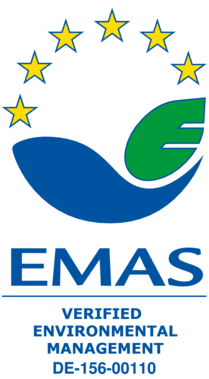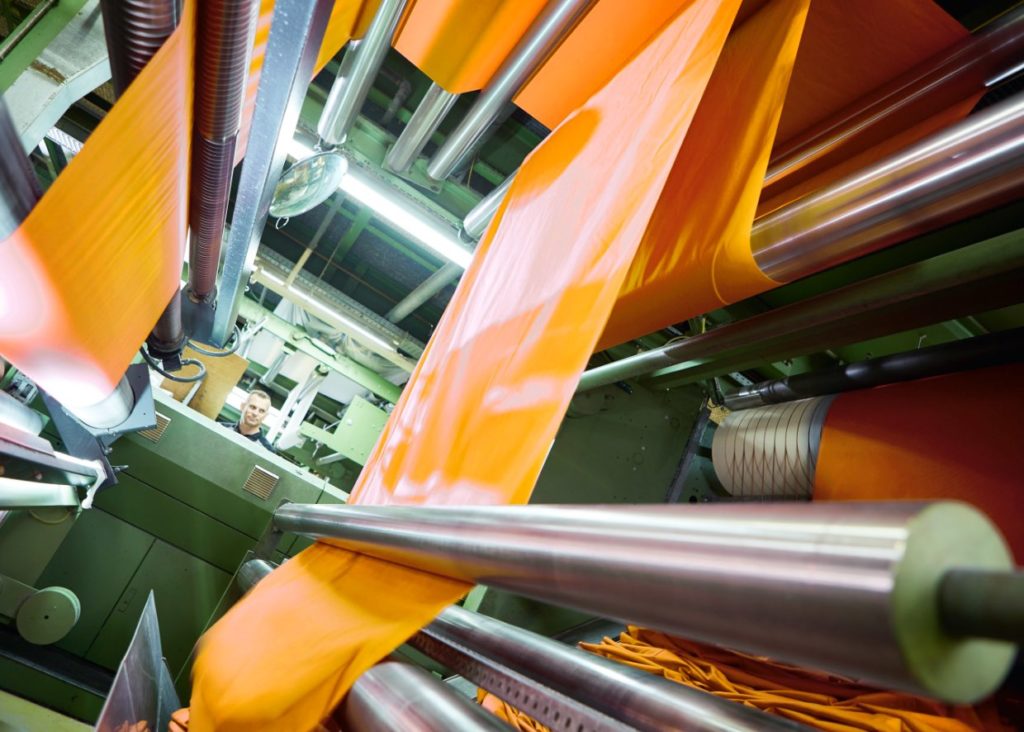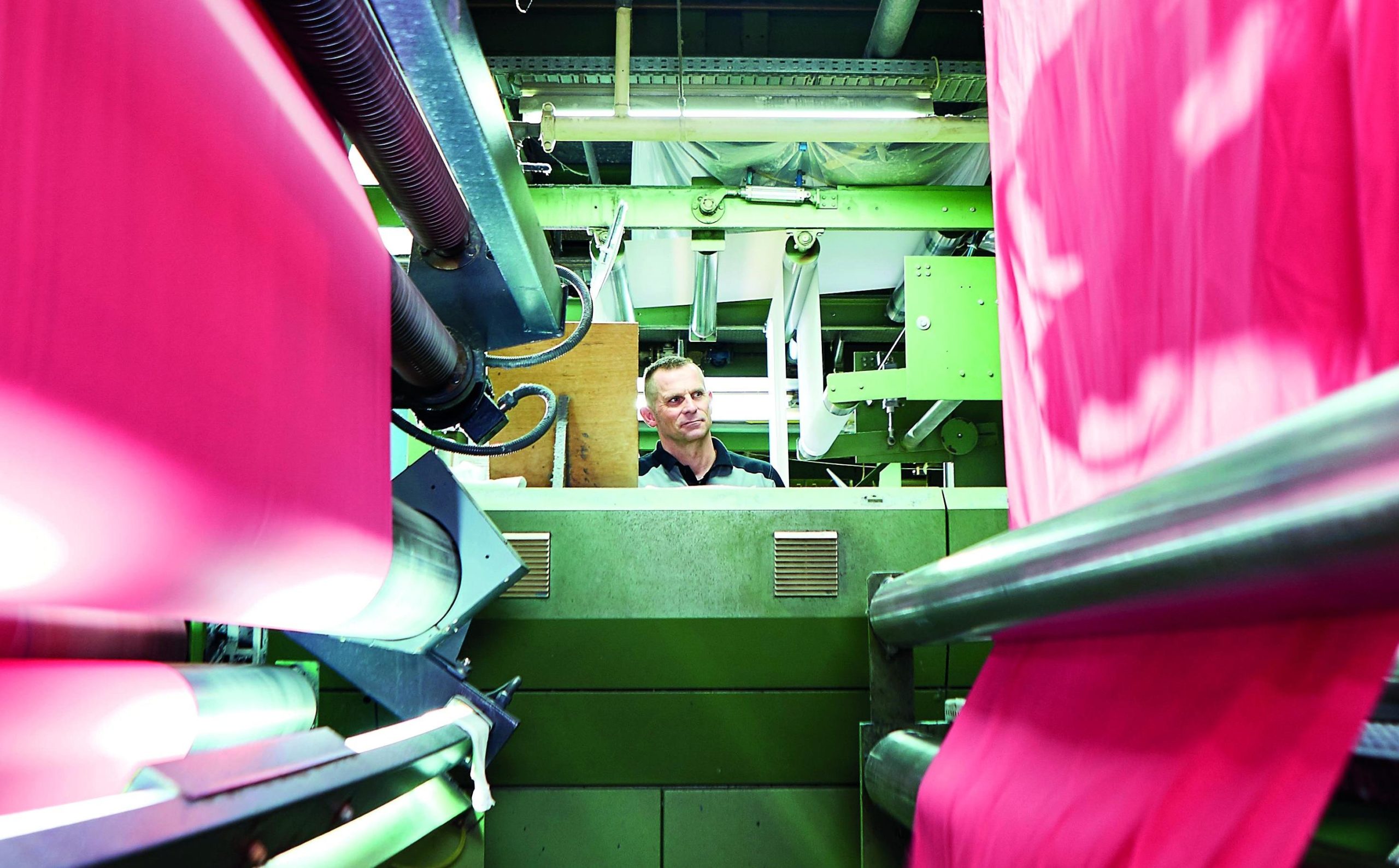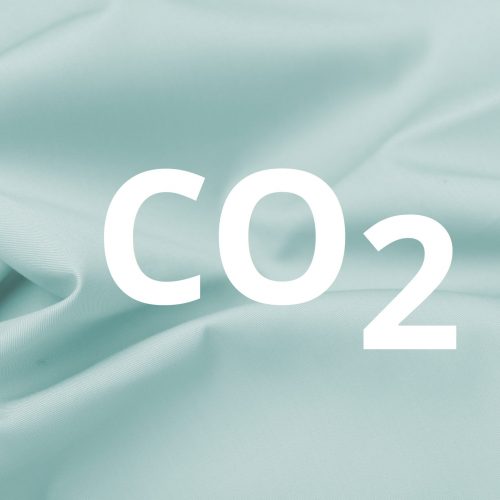
Environmental management at Kettelhack
Environmental protection and the conservation of resources are important components in our company. With our environmental management system in accordance with the European standard EMAS, we pursue a holistic approach to the topic of the environment. Since 2020, the STeP by OEKO-TEX® certification has supplemented the systemic requirements of EMAS.
Our interdisciplinary environmental team, consisting of the Sustainability Manager and the Technical Manager, ensures that the environmental management system is implemented holistically and fully embraced by all colleagues.

Our environmental statement
With EMAS, we are obliged to publish an annual environmental statement. →Here are all the details from our current environmental statement.

Numbers, data, facts!
Whether it’s energy consumption per machine hour or the balancing of waste volumes – key figures are indispensable for our environmental management system. → learn more
New
Kettelhack is OEKO-TEX® STeP certified!
Since October 2020, Kettelhack has been certified according to the OEKO-TEX®STeP standard! This standard contains various requirements from the areas...
Re-certification according to EMAS passed!
In May 2021, we passed our re-certification audit for our environmental management system according to EMAS and ISO 14001:2015.
Our roof terrace is already in bloom for the 5th year!
Five years ago, a habitat for native insects was created during a roof renovation. This summer, the wildflower meadow surprises...
Fibres from cotton, wood or plastic bottles?
Whether classic cotton, sustainable cellulose fibres from wood or recycled polyester – each fibre brings its own ecological advantages.
Chemicals management at Kettelhack
Without dyes, there can be no coloured, high-performance fabrics. At Kettelhack, the selection and use of the necessary chemicals are carried out with special care and consideration of ecological standards.

Our standards
OEKO-TEX® STANDARD 100, STeP by OEKO-TEX®, ZDHC MRSL 2.0 – we leave nothing to chance when it comes to chemical management.

Brilliant red, purple or magenta?
The choice and quantity of dyes and additives depend on various factors: Desired colour intensity, fabric and quality.
"You may hear talk about 'good' chemicals and 'bad' chemicals, but the truth is that chemicals are neither good or bad. What matters is the context, how and where they occur and how they're used."
Detoxing the Fashion Industry for Dummies (2020)
CO2 site footprint
The carbon footprint adds an important component to the other key figures: This is because this is where the environmental impact of, for example, energy consumption, chemical use or business travel first becomes clear. Both direct and indirect emissions are taken into account in the calculation.

Emitter, Scope 3, CO2 equivalent…
The simple steps of CO2 balancing is not that difficult – especially with the support of simple tools like the Eco-Cockpit. → Click here for the crash course.

44.7 kg of equivalent CO2
are produced during the production of a pillow and duvet set. → Click here for the composition of the CO2 product footprint.
Our environmental management
With our environmental management system according to EMAS, we pursue a holistic approach.
Our fibre stars
Whether classic cotton, sustainable cellulose fibres from wood or recycled polyester – each fibre brings its own ecological advantages.
Not all chemistry is the same…
At Kettelhack, the selection and use of the necessary chemicals are carried out with special care and consideration of ecological standards.
About this report
This digital sustainability report meets the requirements of the EMAS Regulation and complies with the requirements of GRI 4 of the Global Reporting Initiative.
→ learn more
EMAS Environmental Statement
As a registered company in the EMAS register, we are obliged to publish an environmental statement. → Here are all the details from our current environmental statement.